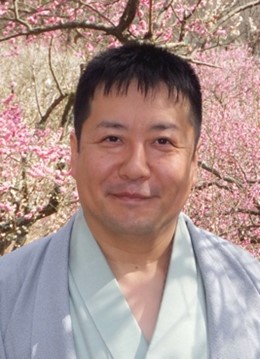
Dr. Masanori Kikuchi
Professor,Group Leader, Bioceramics Group
Research Center for Macromolecules and Biomaterials
National Institute for Materials Science, Japan
Speech Title: Antimicrobial Ability of HAp/Col by Loading Gentamicin or Ag Nanoparticles
Abstract: Hydroxyapatite/collagen bone-like nanocomposite (HAp/Col) has similar nanostructure and chemical composition to bone, and is incorporated into bone remodeling process to be substituted with new bone after osteoclastic resorption of the HAp/Col. The HAp/Col porous body has already been used practical medicine in Japan. On the other hand, preventing implant associated infection (IAI) is important for success of surgical treatments. In order to minimize IAI for bone void fillers, the followings are considered to be necessary; 1. Cleanness of surgical operation circumstances, 2. Add antimicrobial property to materials, 3. Bone void fillers should be dissolved/resorbed in appropriate time. The first one depends on each hospital/country, but third one is fortunately cleared for the HAp/Col; therefore, we tried to add antimicrobial property to the HAp/Col utilizing gentamicin or silver nanoparticles (AgNPs). The HAp/Col soaked in gentamicin suspension adsorbed gentamicin sufficiently. Release profile showed gentamicin on the HAp/Col was released completely in 3 days which is considered acceptable for the HAp/Col because incorporation of the HAp/Col into bone remodeling process starts in 5 days after implantation. Gentamicin added to the HAp/Col paste inhibited hardening process when its concentration was too high. Silver nanoparticles also adsorbed on the HAp/Col sufficiently. Gentamicin- and AgNPs-loaded HAp/Col indicated good antimicrobial activity and showed no cytotoxicity in the appropriate range of loading. These antimicrobial HAp/Cols are expected to be better bone void fillers.
Keywords: Hydroxyapatite, collagen, bone-like nanocomposite, bone-void fillers, antimicrobial property
Biography: Prof. Masanori Kikuchi had gotten his Ph.D. degree from Waseda University, Japan on March 1995 by the research on cation exchanged hydroxyapatites. He joined National Institute for research in Inorganic Materials (now it changed National Institute for Materials Science, NIMS, by merger with National Research Institute for Metal) in 1995 and promoted as a group leader of Bioceramics Group in 2007. After Joining NIMS, he worked on calcium phosphate based bioceramics and composite biomaterials for bone regeneration. One of his main topics is hydroxyapatite/collagen bone-like nanocomposite (HAp/Col) and its first paper on Biomaterials 2001 has been cited more than 800 in SCOPUS (more than 1,100 in Google Scholar). The HAp/Col porous body is sold in Japan from 2013 and widely used in both orthopedic and dental fields. He also works on functionalization of biominerals from sea urchin, antithrombogenic surface treatment of Ti and international standardization of bioceramics.
He is a professor at the University of Tsukuba, visiting professor at Hokkaido University and guest professor at Okayama University. He also serves for ISO as a convenor of ISO/TC 150/SC 1/WG 3 from 2011 and head of Japanese delegation for ISO/TC 150 from 2023. He win several awards including Ichimura Academic Award from The New Technology Development Foundation and 74th Award of The Ceramic Society of Japan.
